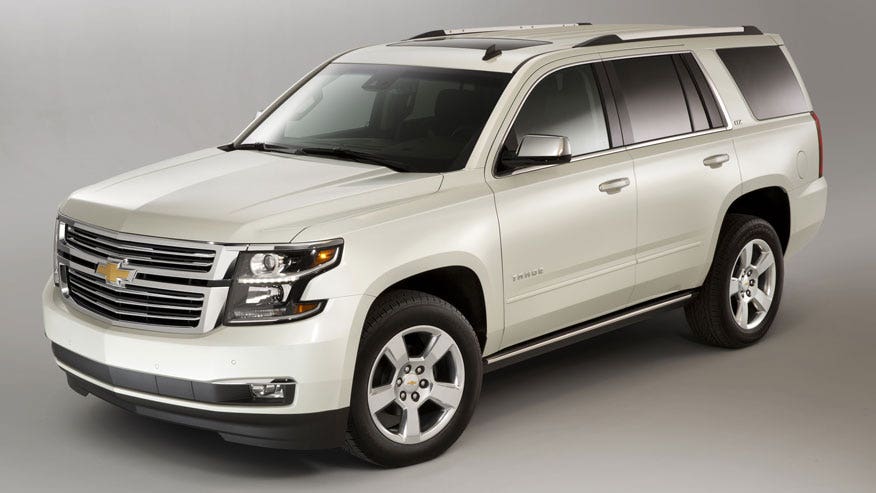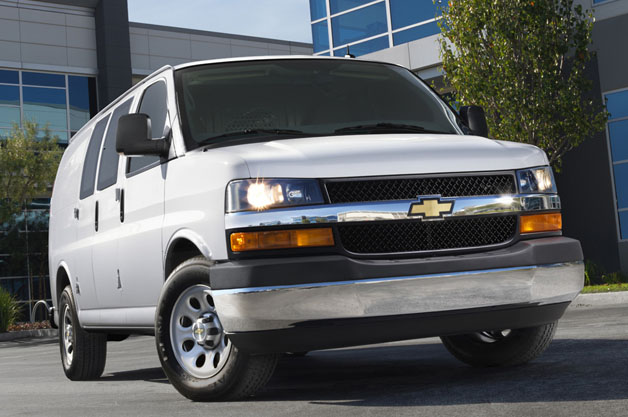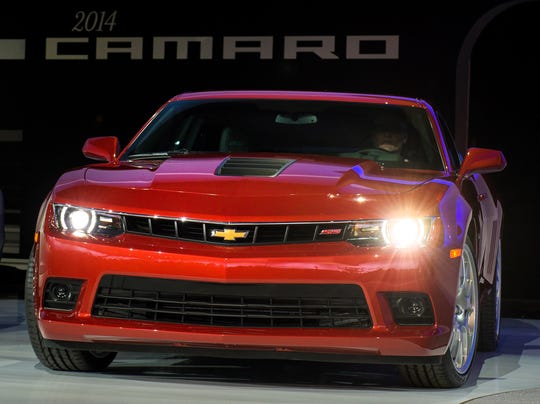
By General Motors - Chevrolet Silverado 1500 will maintain a 5,443 kilogram (12,000-pound) maximum available trailer weight rating as it transitions to new ratings for 2015 based on SAE J2807 Recommended Practices.
"We engineering the new Silverado 500 to be our most capable light-duty pickup ever," said Jeff Luke, executive chief engineer. "For 2015, we will build on that strong foundation to implement SAE J2807 while maintaining robust towing capability across the lineup.
"For 2015, Silverado 1500 will continue to offer trailer weight ratings up to 5,443 kilograms (12,000 pounds)," said Luke. "And, we will offer a number of configurations with trailer weight ratings of 4,082 kilograms (9,000 pounds) or more, enabling light-duty pickup customers to choose exactly the right truck for their towing requirements."
For 2014, Silverado, the North American Truck of the Year, led the light-duty pickup segment with a maximum available trailer weight rating of 5,443 kilograms (12,000 pounds).
The stronger choice for tough towing situations
"We engineering the new Silverado 500 to be our most capable light-duty pickup ever," said Jeff Luke, executive chief engineer. "For 2015, we will build on that strong foundation to implement SAE J2807 while maintaining robust towing capability across the lineup.
"For 2015, Silverado 1500 will continue to offer trailer weight ratings up to 5,443 kilograms (12,000 pounds)," said Luke. "And, we will offer a number of configurations with trailer weight ratings of 4,082 kilograms (9,000 pounds) or more, enabling light-duty pickup customers to choose exactly the right truck for their towing requirements."
For 2014, Silverado, the North American Truck of the Year, led the light-duty pickup segment with a maximum available trailer weight rating of 5,443 kilograms (12,000 pounds).
The stronger choice for tough towing situations
The 2015 Silverado 1500 will be available with a number of features engineered for serious towing:
- The available 6.2L EcoTec3 V-8 is the most powerful engine offered in any light-duty pickup, with 420 horsepower and 460 lb-ft of torque. Like other EcoTec3 engines, it combines proven performance with advanced fuel-saving technologies, seamlessly switching to four cylinders to improve efficiency in light-load driving.
- The available NHT max trailering package includes a 9.76-inch rear axle, heavy-duty rear springs, revised shock tuning for increased control, enhanced cooling, and an integrated trailer brake controller. Also, included is an automatic locking rear differential, trailer hitch, and bumper-mounted 4- and 7-pin connectors.
- Combined, the 6.2L EcoTec3 V-8 and max-trailering package will give the 2015 Silverado 1500 2WD double-cab a 5,443 kilogram (12,000 pound) trailer weight rating. The comparable 4x4 version will have a trailer weight rating of 5,398 kilograms (11,900 pounds).
- Silverado's standard 4.3L EcoTec3 V-6 and available 5.3L EcoTec3 V-8 also will offer significant towing capability for 2015, with maximum available trailer weight ratings of 5,080 kilograms (11,200 pounds) for the 5.3L V-8 and 3,447 kilograms (7,600 pounds) for the V-6 (SAE J2807)
Foundation for all 2015 Silverado 1500s is a fully boxed high-strength steel frame. Extensive use of high-strength steels in the frame and body structure also contributes to a quieter interior and more solid feel, and helps Silverado earn a 5-Star Overall Vehicle Score for safety in the newest government crash tests. Government 5-Star Safety Ratings are part of the U.S. Department of Transportations New Car Assessment Program.
Like all new Silverados, the 2015 Silverado 1500 will have the best pickup coverage in North America, including a 5-year/160,000 kilometre limited powertrain warranty, and is part of the family of the most-dependable, longest-lasting pickups on the road. The 2014 Silverado has won more awards than any other pickup.
2015 Silverado 1500s will be available starting later this summer, with full availability in Q4 of this year.
Like all new Silverados, the 2015 Silverado 1500 will have the best pickup coverage in North America, including a 5-year/160,000 kilometre limited powertrain warranty, and is part of the family of the most-dependable, longest-lasting pickups on the road. The 2014 Silverado has won more awards than any other pickup.
2015 Silverado 1500s will be available starting later this summer, with full availability in Q4 of this year.
Choosing the right truck for the towing
With the transition to SAE J2807, trailer weight ratings will be adjusted for many Silverado 1500s.
As always, customers need to determine the appropriate vehicle and trailering capacity for their particular situation, including the curb weight of their specific vehicle, the number of passengers they will actually carry, the actual tongue weight for their combination, the amount of cargo in their vehicle, and the weight of the load they plan to tow.
Customers should follow the trailering guidelines in their owner's manual, ask their Chevrolet dealer for trailering advice, or contact Chevrolet Customer Assistance for more information.
Also, the Chevrolet Trailering Guide can be found under the Ownership tab of the Chevrolet.ca website.
As always, customers need to determine the appropriate vehicle and trailering capacity for their particular situation, including the curb weight of their specific vehicle, the number of passengers they will actually carry, the actual tongue weight for their combination, the amount of cargo in their vehicle, and the weight of the load they plan to tow.
Customers should follow the trailering guidelines in their owner's manual, ask their Chevrolet dealer for trailering advice, or contact Chevrolet Customer Assistance for more information.
Also, the Chevrolet Trailering Guide can be found under the Ownership tab of the Chevrolet.ca website.
Background: SAE J2807 Recommended Practice
Performance standards for trailering vehicles: To help ensure that vehicles can confidently tow the rated maximum trailer weight under a variety of real-world driving conditions, SAE J2807 establishes specific test protocols. These include:
- Cooling capability on a long highway upgrade modeled on the Davis Dam grade on Arizona SR 68;
- Launch and acceleration performance on a level road and a 12 percent upgrade;
- Combined handling performance - understeer and trailer sway;
- Combined braking performance - stopping distance and parking brake-hold on grade; and
- Structural performance for the vehile and hitch or hitch receiver.
New calculation for trailer weight ratings: In addition to the performance standards, SAE J2807 also uses a specific set of assumptions to calculate maximum trailer weight ratings:
- For light-duty full-size pickups (GVWR < 3,855 kg (8,500 lbs.)), SAE J2807 assumes that the tow vehicle includes any options with higher than 33 percent penetration;
- It assumes there is both a driver and passenger in the vehicle, each weighing 68 kilograms (150 pounds);
- It assumes that tow vehicles also include up to 31 kilograms (70 pounds) of aftermarket hitch equipment (where applicable); and
- For conventional trailer towing, SAE J2807 assumes that 10 percent of the trailer weight is on the tongue.







